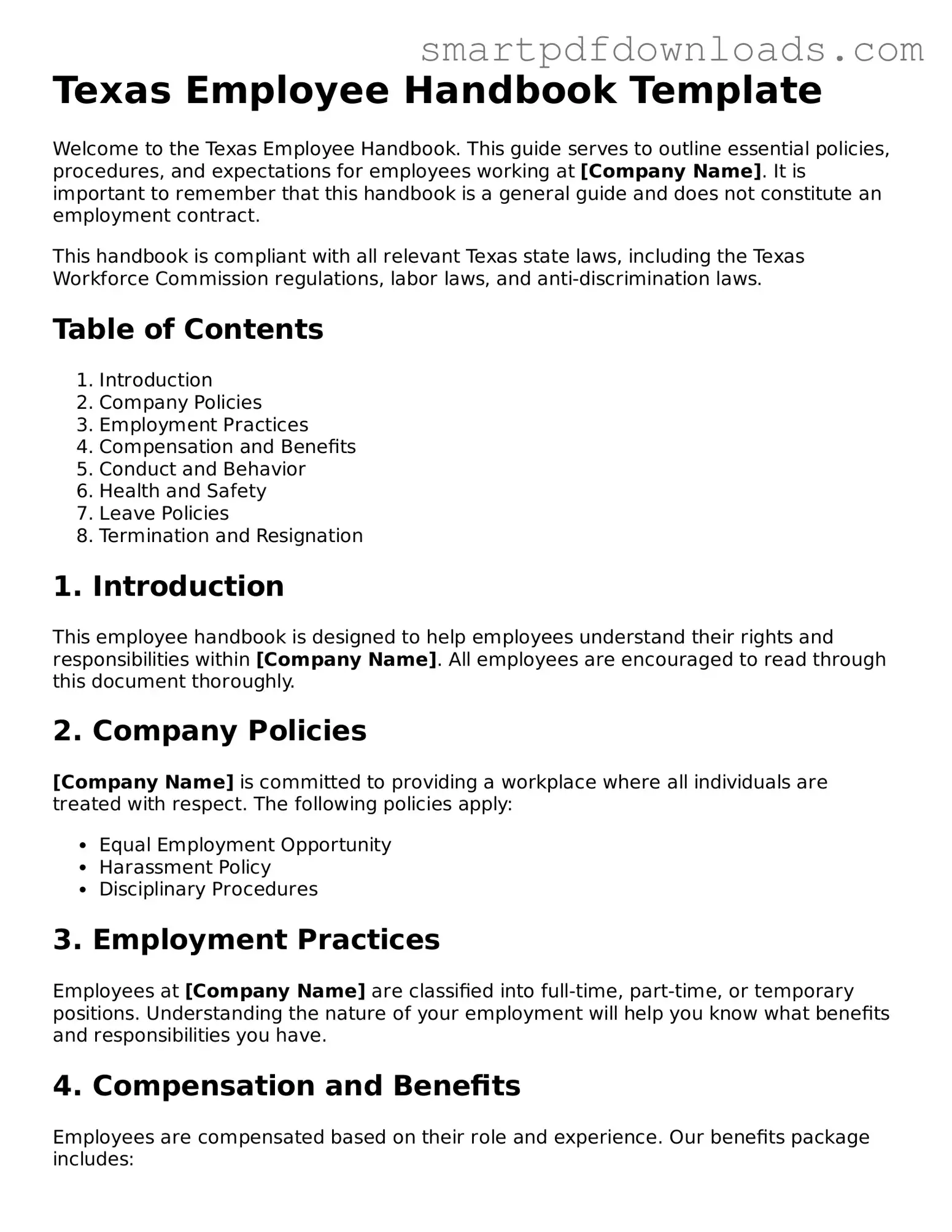Texas Employee Handbook Template
Welcome to the Texas Employee Handbook. This guide serves to outline essential policies, procedures, and expectations for employees working at [Company Name]. It is important to remember that this handbook is a general guide and does not constitute an employment contract.
This handbook is compliant with all relevant Texas state laws, including the Texas Workforce Commission regulations, labor laws, and anti-discrimination laws.
Table of Contents
- Introduction
- Company Policies
- Employment Practices
- Compensation and Benefits
- Conduct and Behavior
- Health and Safety
- Leave Policies
- Termination and Resignation
1. Introduction
This employee handbook is designed to help employees understand their rights and responsibilities within [Company Name]. All employees are encouraged to read through this document thoroughly.
2. Company Policies
[Company Name] is committed to providing a workplace where all individuals are treated with respect. The following policies apply:
- Equal Employment Opportunity
- Harassment Policy
- Disciplinary Procedures
3. Employment Practices
Employees at [Company Name] are classified into full-time, part-time, or temporary positions. Understanding the nature of your employment will help you know what benefits and responsibilities you have.
4. Compensation and Benefits
Employees are compensated based on their role and experience. Our benefits package includes:
- Health Insurance
- Retirement Plans
- PTO (Paid Time Off)
5. Conduct and Behavior
Professional conduct is expected in all interactions. This includes:
- Timeliness and attendance
- Respect for coworkers and clients
- Compliance with company policies
6. Health and Safety
Maintaining a safe workplace is a priority at [Company Name]. Employees have the right to a safe working environment, and it is their responsibility to report any unsafe conditions.
7. Leave Policies
Leave policies may include sick leave, vacation leave, and family leave. Understanding the requirements for each type of leave is crucial.
8. Termination and Resignation
Termination may occur under various circumstances. Employees can resign at any time, but it is advisable to provide notice as per company policy.
For any questions regarding this employee handbook, employees can reach out to [HR Contact Information].
